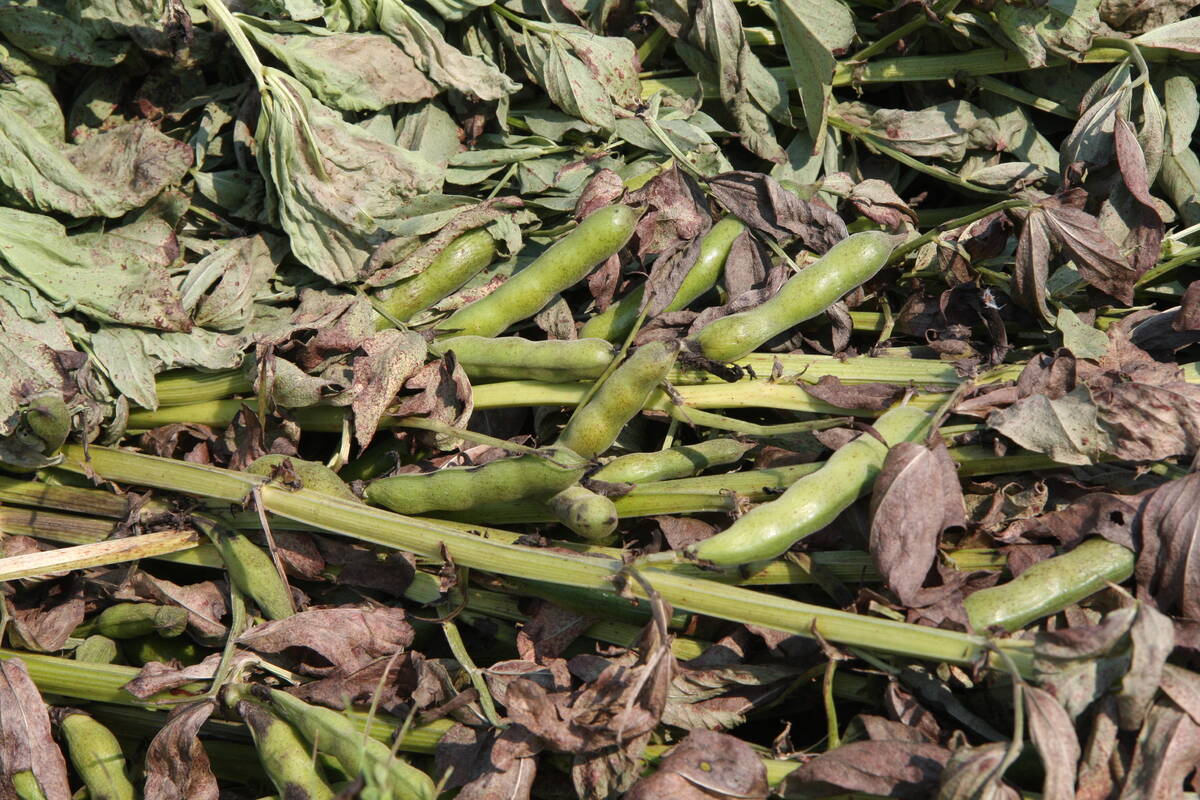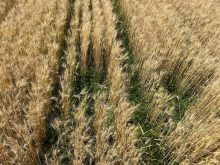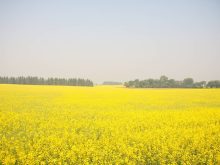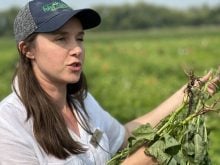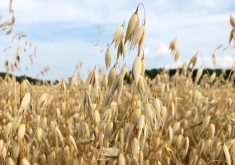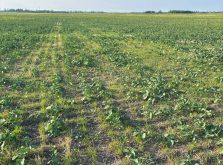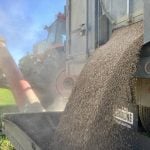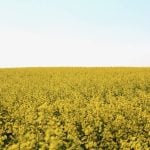Glacier FarmMedia — In a world with Netflix, YouTube and Skip the Dishes, patience is a lost art. More Canadians want things to happen, easily and immediately.
Eric McLean, who farms near Oak River, Man., thinks farmers should avoid the “easy button” approach to crop production.
Adding another crop to the canola-cereal rotation may not make buckets of money this year, but it offers benefits down the road.
“With canola, we’ve seen the increases of verticillium (stripe) that’s been taking off the top end (yield) potential in canola,” said McLean, who was part of a panel discussion on pulse crops at Manitoba Ag Days in Brandon in January.
Read Also

Claas brings 1000 Series SP forage harvesters to Canada
In mid-August, Claas unveiled its new line of Jaguar forage harvesters at an event in Visalia, California, deep in the heart of that state’s dairy region.
“We have to keep trying different things. Honestly, that is the solution, to have that diversification in the crop rotation.”
McLean shared the stage with growers who have tried alternative pulse crops such as faba beans, lupins, non-genetically modified soybeans and black beans.
READ MORE: Faba beans for Prairie gardens — and fields
McLean, who runs JS Henry Seeds, is convinced growing a pulse crop this year will pay off in coming years. It can reduce canola disease pathogens and improve the soil.
That sounds great, but there are practical realities: for instance, if producers aren’t seeding canola, what are they planting?
Jeff Kostuik, general manager of Verve Seeds and a former crop diversification expert in Manitoba, says that’s not the right question. Many farmers would add peas to their crop rotation, but they can’t because of issues with aphanomyces, a serious soil disease.
So, farmers need an alternative to peas. One option could be faba beans.
The crop hit a high of 120,000 acres on the Prairies in 2021. Since then, acres have dipped to around 80,000.
That’s partly explained by export demand. Canada exported 38,000 and 28,000 tonnes of faba beans, respectively, in 2019 and 2020.
Those sales have declined, and domestic feed use is now more important.
“Canadian export performance over the past six years shows that fababean usage is increasingly a domestic affair, with only two major destinations: Egypt and the United States,” Marlene Boersch of Mercantile Consulting wrote recently.
“Most Canadian-grown fababeans are primarily used domestically for pet food and livestock feed.”
Faba bean acres and production may have dropped in Canada, but there’s a mood of optimism right now.
A seed dealer at Ag Days said more growers are inquiring about faba beans, and acres will likely jump in 2025.
Part of that optimism is coming from the food industry.
There is growing interest from food manufacturers who want to use faba beans as a source of protein.
To tap into that opportunity, Canadian plant breeders have developed varieties that are low in vicine and convicine, a pair of compounds that can cause severe health problems in a small percentage of people.
For that population, consuming faba beans with vicine/convicine can damage red blood cells and trigger a serious disease called favism.
Canada’s faba bean industry is transitioning to low vicine/convicine varieties, which could make a world of difference.
“That barricade of the anti-nutritional, the vicine/convicine, was so important in the breeding efforts to eliminate that (issue),” Kostuik says.
“It has certainly opened things up.”
Faba bean prices are decent this winter, around $10 to $11 per bushel.
Top-end yields of 100 bu. per acre are possible in Western Canada, but 60-70 bu. are more reasonable targets, Kostuik says.
One of the keys for higher yields is early seeding. It’s important to get them in the ground as soon as possible to avoid hot weather during the flowering period.
“It’s a big bean. You want to get it in early. It takes in a lot of moisture at the beginning of the season,” Kostuik says.
“The past research (shows) seeding date is one of the biggest things for yield.”
It’s likely that a farmer, growing faba beans for the first time, won’t hit a home run on yield.
However, that’s acceptable because a diverse rotation has other benefits, McLean says.
“If we can elevate the two following crops (after) these pulse crop options, we can recoup any marginal losses … in the pulse crop,” he says.
“If you get an extra five or 10 bu. of canola … that will easily offset (the pulse crop).”


